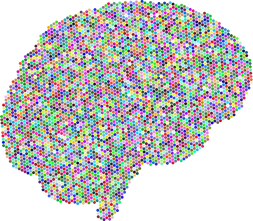 Recently, the average media consumer could get the impression that Artificial Intelligence (AI) is the next big thing and that it will coin our daily lives in the near future. Numerous developments are currently discussed in newspapers and magazines, TV debates, blogs etc. Some of these developments are said to bring about significant, sometimes even radical changes to different industries, be it health, finance, production etc. The question is: Will charitable fundraising remain unaffected by these big shifts and everything will stay as it is? We have our doubts but definitely see the need for a differentiated view at the same time. This month’s blog post will provide a quick introduction to artificial intelligence and reflect on it current and possible future role in the context of fundraising.  What is Artificial Intelligence So, what is Artificial Intelligence? Even a quick web research delivers numerous definitions of which many show certain overlap. Let us proceed with one definition by digital evangelist Ray Kurzweil who said that AI ist the art of creating machines that fulfil tasks that – if they were carried out by humans – would require intelligence. The pictures that come to people´s minds should not be underestimated when it comes to a broader understanding of AI. It can be assumed that many think of so called strong artifical intelligence when they hear the term AI. Strong artifical intelligence implies by definition machines that are actually intelligent just like Data from Star Trek, C3PO from Star Wars or Bender from Futurama. The real-life form of artifical intelligence is so called weak artifical intelligence, machines that show intelligent behaviour to some degree. Weak AI essentially means rule-based systems that have capacity for machine learning. AI history in a nutshell The beginnigs of AI go back to the early days of modern information technology. You might know Alan Turing from your studies and/or the movie The Imitation Game (showing how Turing and his fellow experts significantly contributed to the Allied victory in WWII). He suggested a test now named after him to find out whether the respective opposite is a machine or a human. In the same year, Isaac Asimov wrote the novel I, Robot and suggested the Three Laws of Robotics. Asmiov´s work is a good example of the overlap between technoclogical advances in AI and their dramatization in popular culture. From the beginning oft he 1950ies onwards, AI technology evolved gradually, It was, for instance, as early as 1974, i.e. 45 years ago, when the Stanford AI lab introduced the first prototype of a self-driving car. A growing audience saw Deep Blue beat chess world champion Gary Kasparov in 1997. A bit more than a decade later, in 2011, Siri, Google Now und Cortana were introduced almost at the same time. What about the future? There are developments than can be forseen. Sooner or later self driving cars will be introduced, translation algorithms as well as image and text recognition will gradually become better etc. When it comes to the long-term perspective, there are different positions. Elon Musk, from Tesla for example goes as far as to term AI as a potential threat to the existence of the human race. Andrew Ng, a machine learning evangelist, says that fearing the rise of killer robots is like worrying about overpopulation on Mars.  What are the functions of AI? To put it in an anthropomorphic, i.e. human-like sense, AI can nowadays do the following:
From a more functional perspective, AI capabilites can be summarized as follows:
It has to be moreover noted that AI is not a monolithic and distinct technology but a bundle of different technologies, methods and algorithms. This is reflected by the different sub-areas:
Although AI is an ambiguous field, there are certain research areas and big topics that can be identified:
What AI is able to do - and how it might change the game Many think tanks, consultancies and companies deal with the future potential and development of AI across industries. A quite recent study by Mc Kinsey deals with the impact of AI on different sector and functions. AI can do an impressive lot of things nowadays, be it agriculture, medicine, finance, law etc. Business Insider have put together a compact list with some 50 examples, all with a link for further reading. Expectation levels are definitley high when it comes to the potential of AI– which brings about the risk of exaggerated hopes and fears at the same time. Inspiried by a blogpost on datasciencecentral, a blog we can really recommend, we find it worthwhile to reflect on 6 common myhts regarding AI:
 So what? The case of charitable fundraising organizations To put it very generically, FR organizations can be seen as entities that link needs (be it children at risk, endagered animals or the environment) with supporters. As a consequence, there are three major pillars – the need, the oranization and the supporters (or, to be exact, the communication and interaction with them) in which AI might contribute. The need We found three inspiring examples from different organizations how AI – also at small scale and in a hands-on manner – can contribute close to the need of charitable organizations.
The organization and its processes This is the „internal“ view and it is therefore hard to find promiment good practice examples on the web. Generally speaking, AI has the potential to help improce payment processes, fulfilment processes, etc. These processes are often rather „generic“ to a certain extent and therefore comparable to the profit sector – which is an opportunity when it comes to available tools, expertise etc. Donor Communication and Fundraising Many topics we have covered in this blog so far, be it churn analyses, donor clustering, dealing with unstrcutured data, data visualization etc. can be attributed to artificial intelligence in a broader sense and can be potentially applied in afundraising context. AI in fundraising might therefore mean using advanced algorithms and data science methods for donor data. There are also other applications of AI in todays fundraising context. The American version of Amazon’s Alexa is now able to trigger donations through voice commands. Numerous organizations have started using chatbots to enhance their touchpoints with donors. So, what to do now? Public Enemy already rapped “Don’t believe the hype” in 1988. So, should the fundraising sector lean back and watch other industries chasing after supposed AI innovation? We do not think so - but instead of thinking about big investments in the first place, we find it recommendable gradually start building know-how, run tests and create prototypes at a smaller scale. If you need support or resources, get in touch with a reliable partner that knows your organizations and whom you have a sustainable relationship with. As far as conferences, blogs, books etc. about AI are concerned, there is nothing that holds one back - so why not start dealing with AI for fundraising in 2019?  Speaking of 2019: As the year is still quite young, we wish you and your colleagues a happy, healthy and successful new year! P.S. for joint systems clients: This blog post is an extract of a keynote I have delivered recently. Please do not hesitate to get in touch if you are interested in diving deeper into the topic or learning about our service and product portfolio.
1 Comment
 The year 2017 is coming to its close soon. We guess that for many people the days between years are a time to reflect on the opportunities and challenges the year that is about to start will bring. One can expect that this is also true when it comes to trends in Data Science. We did some research for Data Science outlooks 2018. Machine Learning
Machine Learning has been one of the buzzwords in the recent past. We also published an introductory blog post on the topic earlier this year. One might say the term is over-hyped, however, machine learning is applied in academia and across industries as a very recent survey by KDnuggets shows. Dataconomy, a Berlin-based Data Science company, elaborate on the promising field of machine learning but also mention from where organizations are starting from. Regardless of Data Science concepts and tools, 77 percent of German companies still rely on “small" data tools like Excel and Access. Many of them might still have plenty of homework to do to transform into what Dataconomy call data-driven organizations. At the same time, a recent KPMG study (available upon request in German) shows that 60 percent of companies have been able to benefit in different forms (reduction of costs or risks and/or increase of revenues) from Data Science – which of course includes Machine Learning and Artifical Intelligence. Artificial Intelligence (AI) Speaking of artificial intelligence - for many, 2018 will be the year when AI breaks though. The prominent research company Gartner defines AI as one of the most important strategic technology trends for 2018. They refer to a recent survey showing that 6 out of 10 organizations are in the process of evaluating AI strategies whereas the remaining 4 have started adopting respective technologies The analytics company absolutedata goes as far as to speak of AI powered marketing and formulates certain predictions regarding what 2018 will bring in this context:
Bill Vorhies, Editorial Director for Data Science Central, is a bit more hesitant in the context of AI. He predicts that – regardless of the hype – the diffusion of techniques and tools in from the field of AI and deep learning will be slower and more gradual than expected by many. One already visible manifestation of the spread of AI are chat bots which are increasingly used in a web and mobile context. Chat bots essentially process natural language and thereby involve customers and prospects in an interaction. The implementation of facial and gesture recognition currently look like the next big thing as possible applications on the point of sale seem vast. How should nonprofits deal with AI? Steve MacLaughlin, author and Vice President of Data & Analytics at Blackbaud, underlines the vast opportunities for nonprofits but also relativizes the buzz around AI. MacLaughlin explains that AI for nonrpfits requires the availability of the right data, contextual expertise, and continuous learning. Given these factors, AI can support nonprofits to be impactful particularly through fundraising. Big Data We also dealt with Big Data – probably the buzziest of all buzzwords from the field – in February this year. We quite liked a recent blog post by KDnuggets that starts as follows: There's no denying that the therm Big Data is no longer what it used to be [..] note that the t. We now all just assume and understand that our everyday data is huge. There is, however, still value in treating Big Data as an entity or a concept which needs to be properly managed, an entity which is distinct from much smaller repositories of data in all sorts of ways. What follows next is the gist of interviews with various experts from the field talking about their expectations for 2018 and beyond – a really recommendable holiday read. Data Protection The EU General Data Protection Regulation (GDPR) will be enforced from May 25th, 2018. It is yet to be seen to what extent customers and donors will, for instance, actively insist on the Right to be Forgotten – which might have implications for the availability of donor data for advanced modelling as well. People Needed! More and more organizations seem to develop an interest in Big Data experts, Data Architects, Data Scientists etc.. Without any doubt, advanced analytics and Data Science efforts need motivated and skilled women and men to succeed. Florian Teschner conducted an analysis on Data Science job offers recently. Although there is scope for absolute growth in available positions, there is some five fold increase since 2015. Stay tuned to Data Science in 2018 We think it will be worthwhile to keep one’s eyes open in 2018. If you are interested in Data Science as well as the conceptual and technological developments in the field and you are not on Twitter yet, following some influential thinkers from the area might be an interesting starting point. Maptive.com provides a list of potential influencers. If you want to dive a little deeper, some experts’ Github accounts might be a place to go if you look for papers, code etc. - just follow the overview provided by analyticsvidya.com. Last, not least ... ... we wish you and your dear one a happy and relaxed (data-free) Christmas and good start in a successful and dynamic 2018. See you next year on this blog!  Daintree, Australia Daintree, Australia Artificial intelligence (AI) has been an influential concept not only in the scientific community but also in popular culture. Depending on the respective attitude towards AI, one might associate characters such as inhibited but likeable android Data from Star Trek or neurotic and vicious HAL 9000 from the Space Odysee movies with it. The form of AI those two represent is called General AI, i.e. the intelligence of a machine that enables it to perform intellectual tasks as good as or better than a human. General AI is – at least for the moment – still a topic for science fiction. What is interesting for various industries is the notion of Narrow AI (also termed Weak AI). These are technologies that enable humans to fulfil specific tasks in an automated manner just like or even better than they could. In the context of data, machine learning can be seen as an approach to achieve artifical intelligence. Machine learning is about analyzing data, learning from it and using the insights gained for decision making or predicitions about something. The learning in machine learning can be attempted in two generic forms:
What can fundraisers do? I have to say that I did not come across many practice sharing posts or articles when I conducted research for this post. I doubt that either the availability of data or the competence portfolio of analysts and data scientists limit the possibilities of fundraising organizations in the context of machine learning techniques. However, there might be a certain level of insecurity regarding where and how to start. I found an inspiring blog post by Stephen W. Lambert in which he explains that all you basically need is a computer, a database with relevant data and your brain to start diving into machine learning techniques. I think Lambert’s text invites fundraising organizations to do their theoretical and conceptual homework, process and prepare their data accordingly and start experimenting with maching learning techniques. So - go ahead and try. |
Categories
All
Archive
June 2024
|
